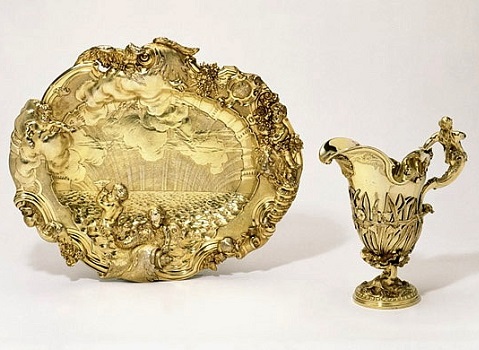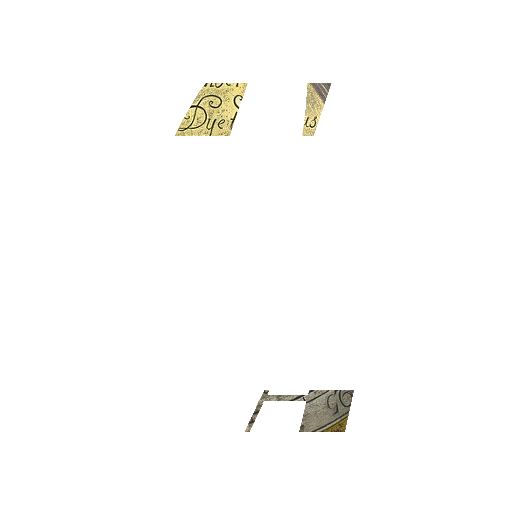1st mark; Windmill-street, 5th February 1712
2nd mark; Windmill-street, 17th March 1732
3rd mark; Garard-street, 27th June 1739
A London-based silversmith. The Victoria and Albert Museum describes him as the "greatest silversmith working in England in the 18th century". Though his mark raises the market value of silver, his output was large and not all his pieces are outstanding. The volume of work bearing de Lamerie's mark makes it almost certain that he subcontracted orders to other London silversmiths before applying his own mark.
De Lamerie was born in 's-Hertogenbosch in the United Provinces (now the Netherlands). He was the son of a minor French nobleman, Paul Souchay de la Merie, a Huguenot who left France following the Edict of Fontainebleau in 1685. His father became an officer in the army of William III of Orange and moved to London in 1689 during the Glorious Revolution, but died a pauper in 1735.
He married Louisa Juliott on 11 February 1717. They had two sons and four daughters together; three daughters survived.
Paul de Lamerie died in London and was buried at St Anne's Church, Soho. There is a memorial plaque at the site of his workshop, 40 Gerrard Street, which was unveiled on 16 January 1992.
In August 1703, de Lamerie became the apprentice to a London goldsmith of Huguenot origin, Pierre Platel (1659–1739). De Lamerie opened his own workshop in 1713 and was appointed goldsmith to George I in 1716. He worked in partnership with Ellis Gamble - formerly apprentice to Master William Hogarth - between 1723 and 1728. His early work is in the simple Queen Anne-styles, following classical French models, but de Lamerie is noted for his elaborate Rococo style of the 1730s, particularly the richly-decorated works of an unidentified craftsman, the Maynard Master.
Leaving his first premises in Great Windmill Street he moved to 40 Gerrard Street in 1738. Here he lived and probably had his shop, his workshops being located in one of the 48 properties he owned in the area.
His customers included Tsarinas Anna and Catherine, Count Aleksey Bobrinsky, Sir Robert Walpole, the Earl of Ilchester, the Earl of Thanet, Viscount Tyrconnel, the Duke of Bedford, and other members of the English aristocracy. He also worked for King John V of Portugal before losing favour to the Germains of Paris. One of his productions to the Portuguese Court was a huge solid silver bath tub lost in the great 1755 Lisbon earthquake.
He served on Goldsmiths' Company committees although never became Prime Warden. He also served as Captain and then Major in the Westminster Volunteers.
The Ashmolean Museum in Oxford has the Treby toilet service (29 pieces, London, 1724-1725)
A two-handled silver cup and cover by Paul de Lamerie, dated 1720, was among the wedding gifts of Queen Elizabeth II.
A GEORGE II SILVER CREAM JUG
LONDON 1742
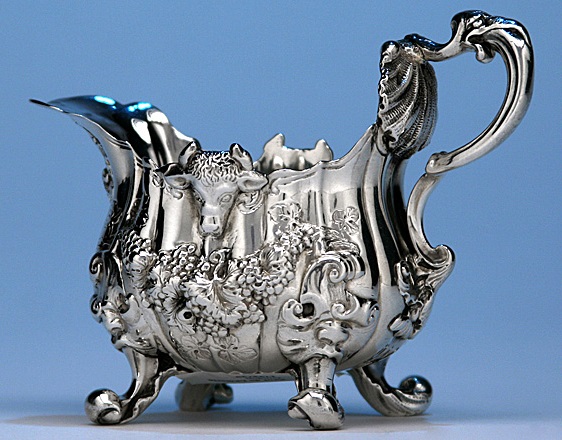
A PAIR OF GEORGE II SILVER CANDLESTICKS
LONDON 1735
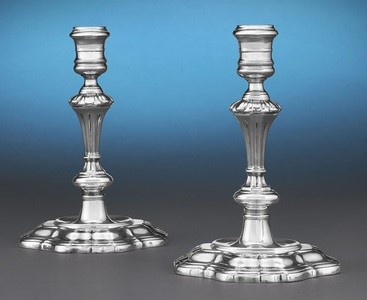
A GEORGE II SILVER-GILT CUP AND COVER
LONDON 1717
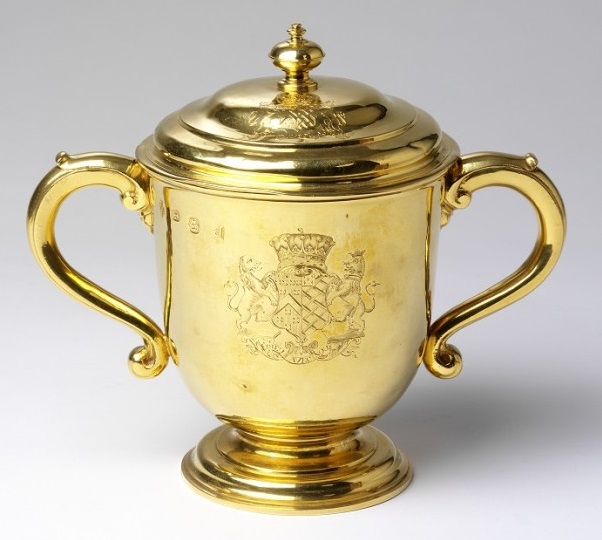
A GEORGE II SILVER-GILT TEA CADDY
LONDON 1747
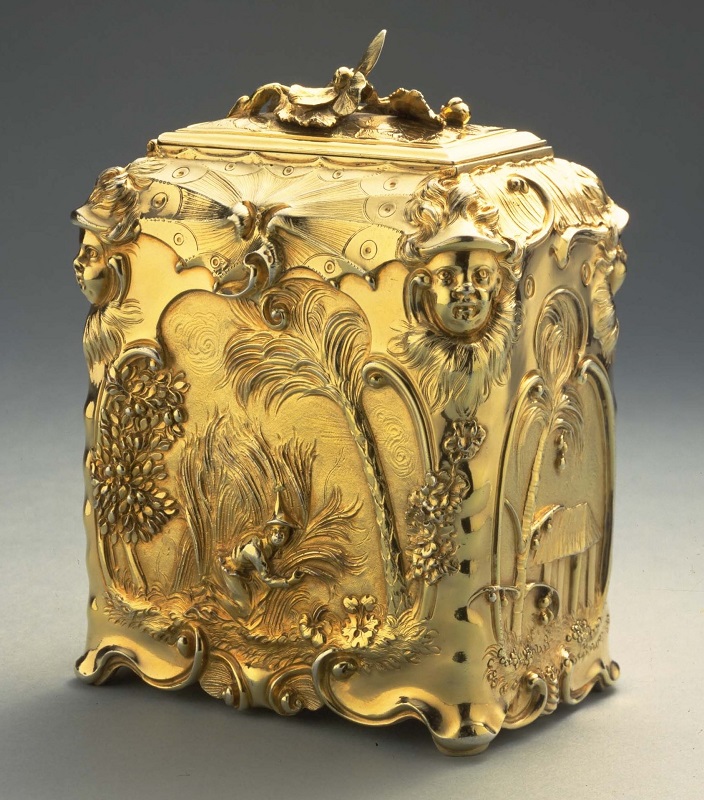
A PAIR OF GEORGE II SILVER SAUCE BOATS
LONDON 1735
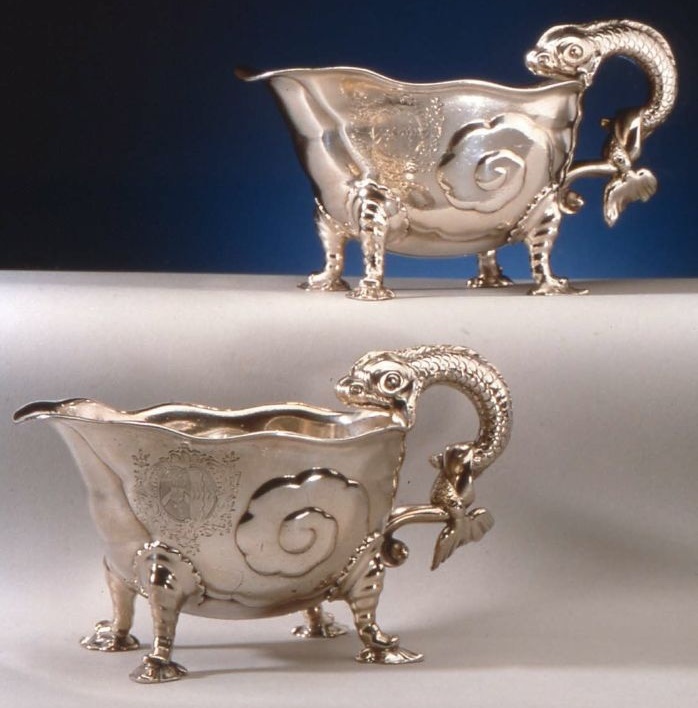
A GEORGE II SILVER SALVER
LONDON 1742
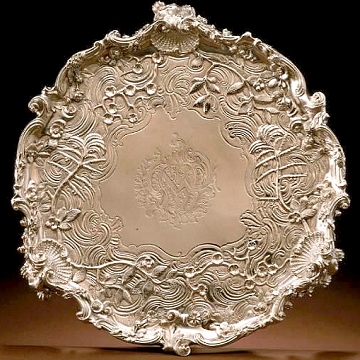
A GEORGE II SILVER PRESENTATION SALVER
LONDON 1736
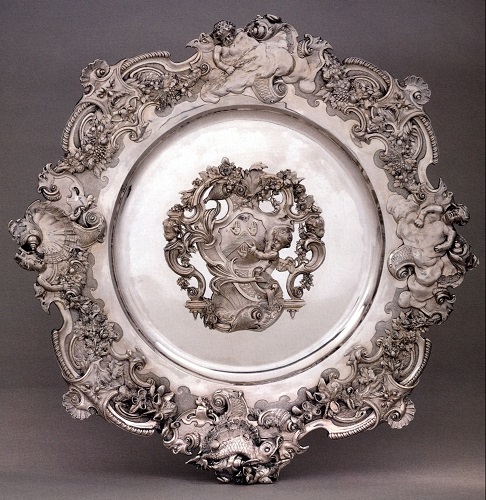
A GEORGE II SILVER BASKET
LONDON 1747
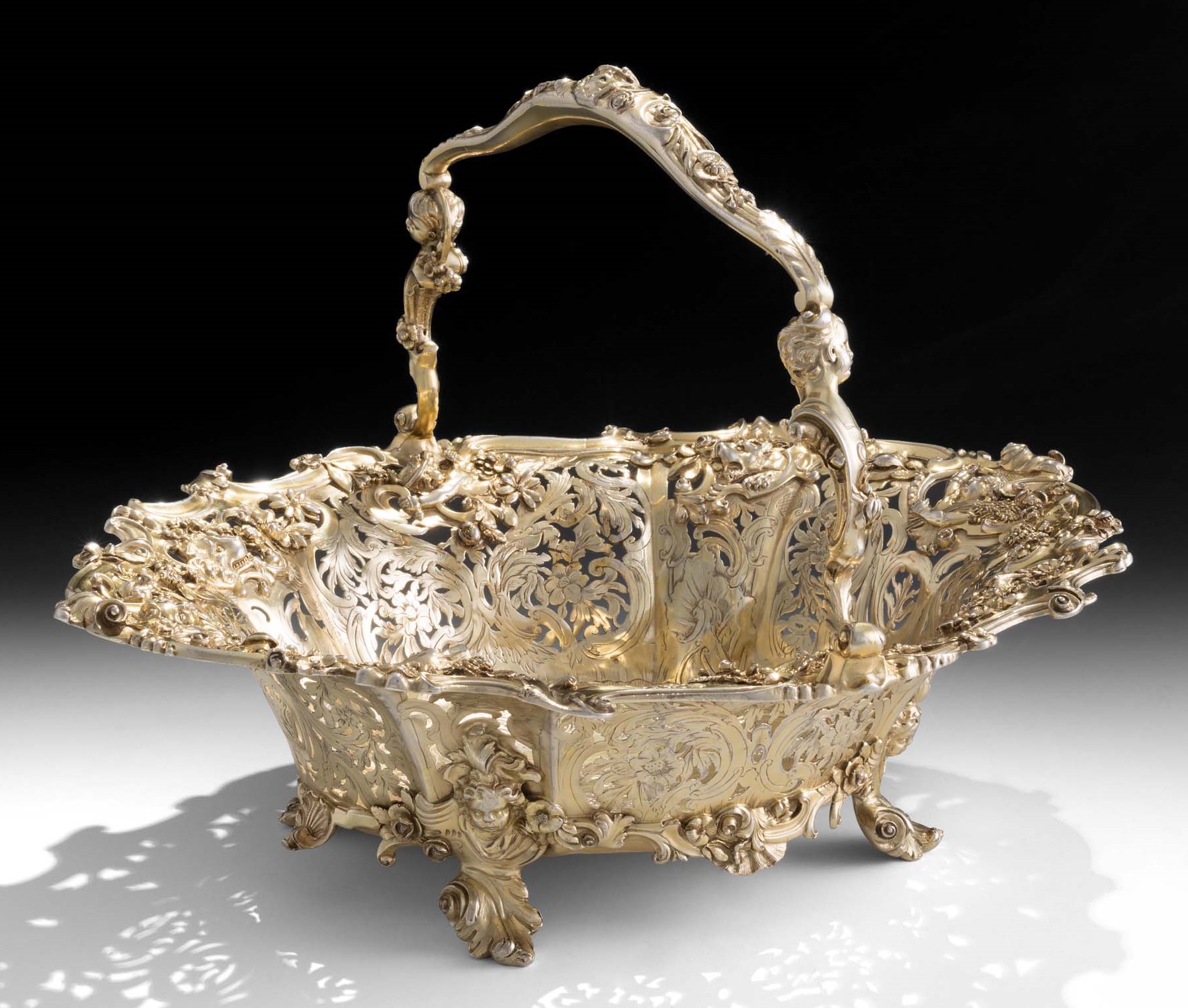
A PAIR OF GEORGE II SILVER CANDLESTICKS
LONDON 1737
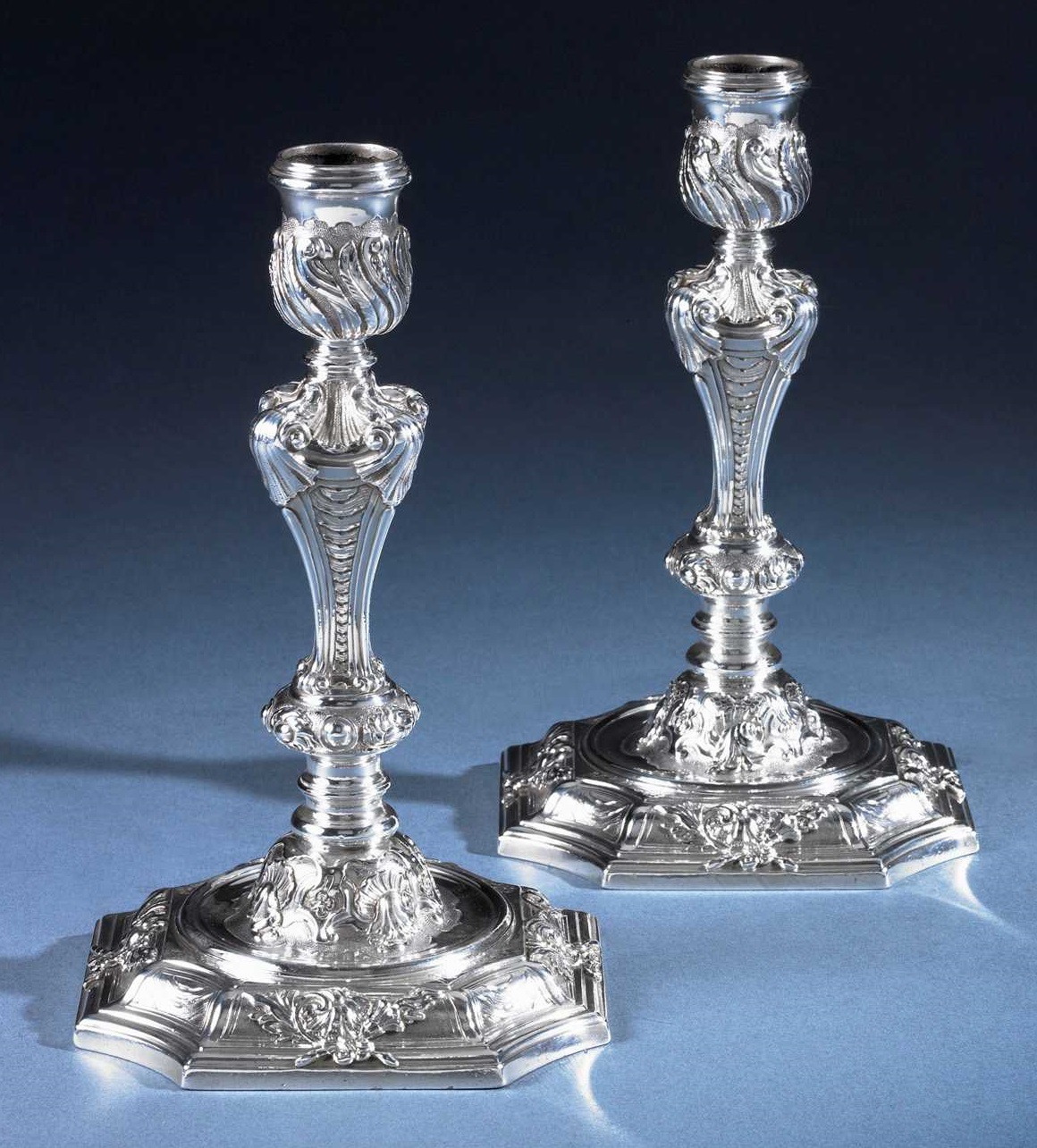
A GEORGE II SILVER-GILT EWER AND DISH
LONDON 1741
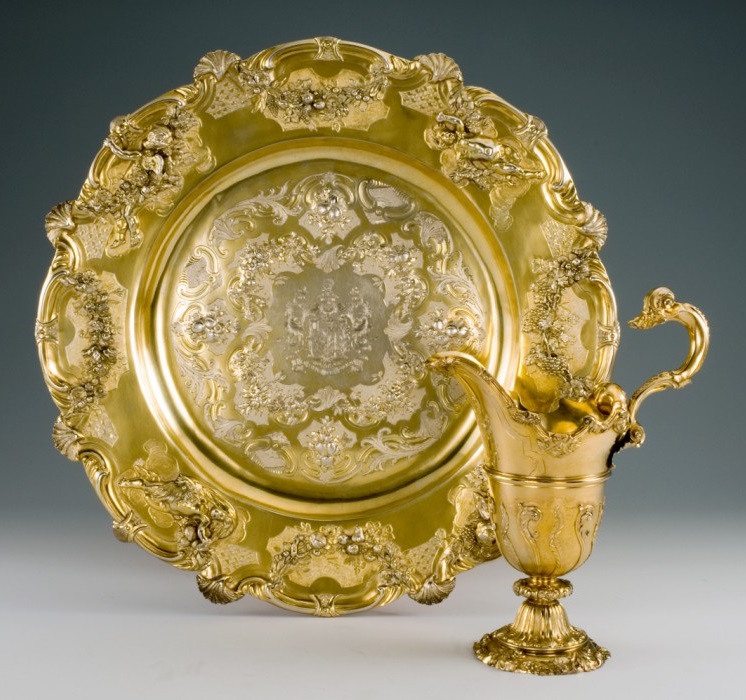
A GEORGE II SILVER KETTLE ON STAND
LONDON 1736
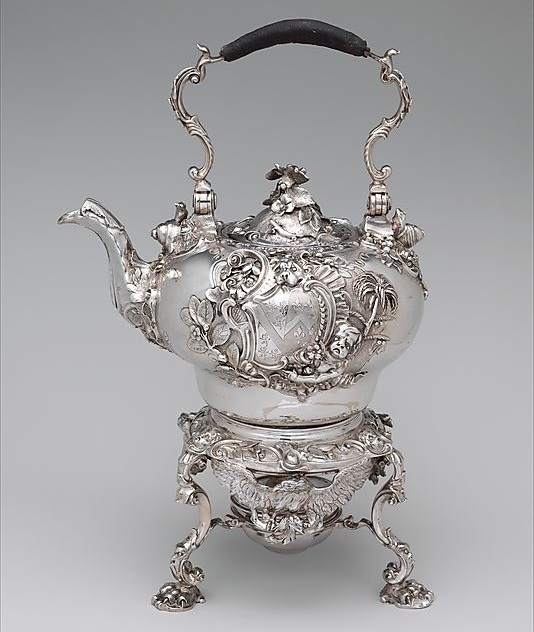
A GEORGE II SILVER-GILT EWER AND DISH
LONDON 1740
